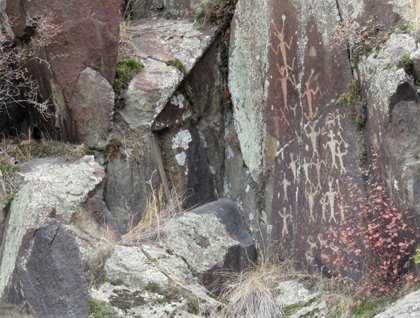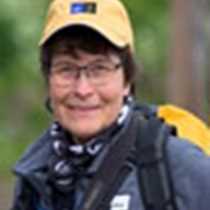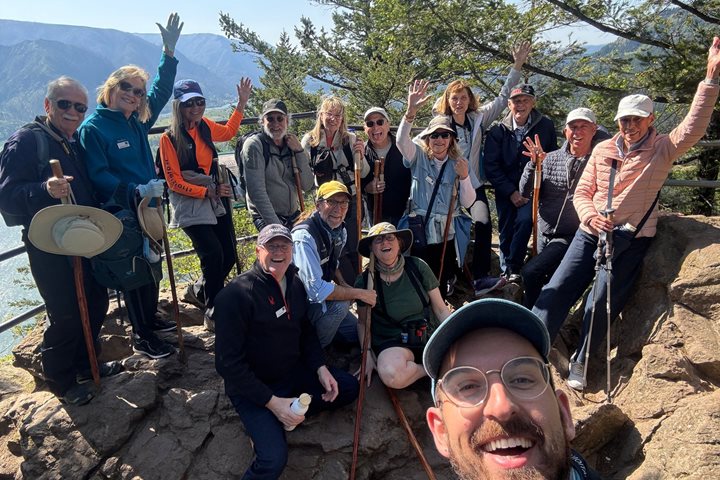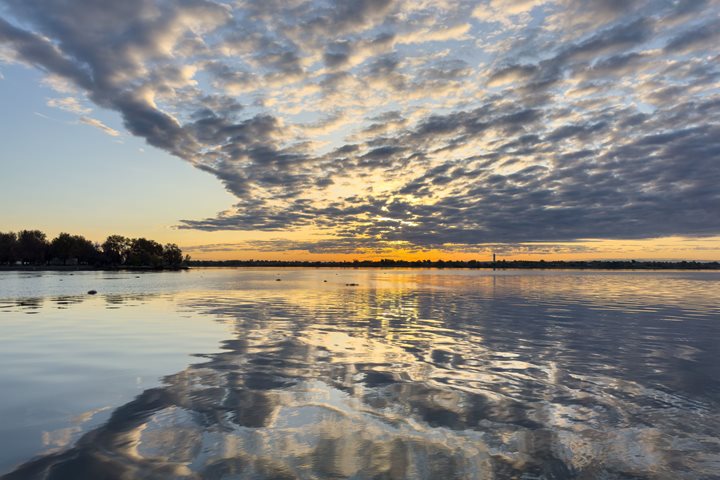First light reflects off the still surface of the Snake River and a long thin wisp of a cloud is draped against the dark hills across the river in Idaho. A pair of cormorants flies low over the water and a soaring gull calls out. A newly waning crescent moon is glimpsed through a break in the clouds. It is 0600 hours, 45 degrees Fahrenheit, and partly cloudy. National Geographic Sea Bird is docked where we boarded the ship last evening.
Right after breakfast we board jet boats for our trip into Hells Canyon, perhaps the most rugged, remote, and scenic canyons in our country. Here the Snake River has cut down through millions of years of Columbia River Basalts and exotic accreted terranes to form a chasm deeper than the Grand Canyon. In the heart of the canyon, He Devil, of the Seven Devils Mountains, rises more than 8,000 feet above the river. Once underway in our jet boats we see mallards and American Coots foraging along the river’s edge. Small skeins of Canada geese fly by, calling as they go. Now trees along the river in their autumn colors smolder gold, orange, and red, here and all along our trip from Clarkston into Hells Canyon.
We make our first stop across the river from Asotin, Washington, the “Place of Eels.” Here, for thousands of years the Native People came to fish for eels. We are stopping to see an amazing outcrop of columnar basalt; the columns were formed by shrinking as a lava flow cooled. There is no simple explanation for the complex arrangement of these curved columns, but it is wonderful just to see them. We pass the mouth of the Grande Ronde River and see Columbia River Basalt lava layers lying one on top of another up to an astonishing 3,000 feet thick. Just upstream of the Grande Ronde we pass out of the basalts and into “exotic terranes,” pieces of land added to the western side of the continent over millions of years by a process called accretion. The first of these exotic terranes is an impressive fossiliferous limestone outcrop. Here we make our official entrance into Hells Canyon where tall dark cliffs and rugged rocks soon loom on either side of the river.
Our morning stop is at Cache Creek Ranch, a green oasis amid the rocks and brown, grass-covered hills. Back on our jet boats, we roar upriver, careening through several rapids until we reach the confluence with the Salmon River, the fabled “River of No Return.” This is our turn-around spot and we head back downriver, but are thrilled to stop and see some bighorn sheep ewes, lambs, and a ram. Our lunch break is at Garden Creek Ranch, a Nature Conservancy site. We enjoy our meal in a large room heated by a wood stove; this is the coldest day so far this fall and the heat feels very good. Wild turkeys forage in an open pasture and mule deer graze in an irrigated apple orchard; this is a peaceful place to spend some time and take a stroll around the grounds and see the wildlife.
Back at National Geographic Sea Bird some of us take a motor coach to the Nez Perce National Historic Park where we see a collection of beautiful Nez Perce artifacts from the 1800s. After dinner we hear from our historian, Don, with a presentation on the Jefferson-Lewis connection.







